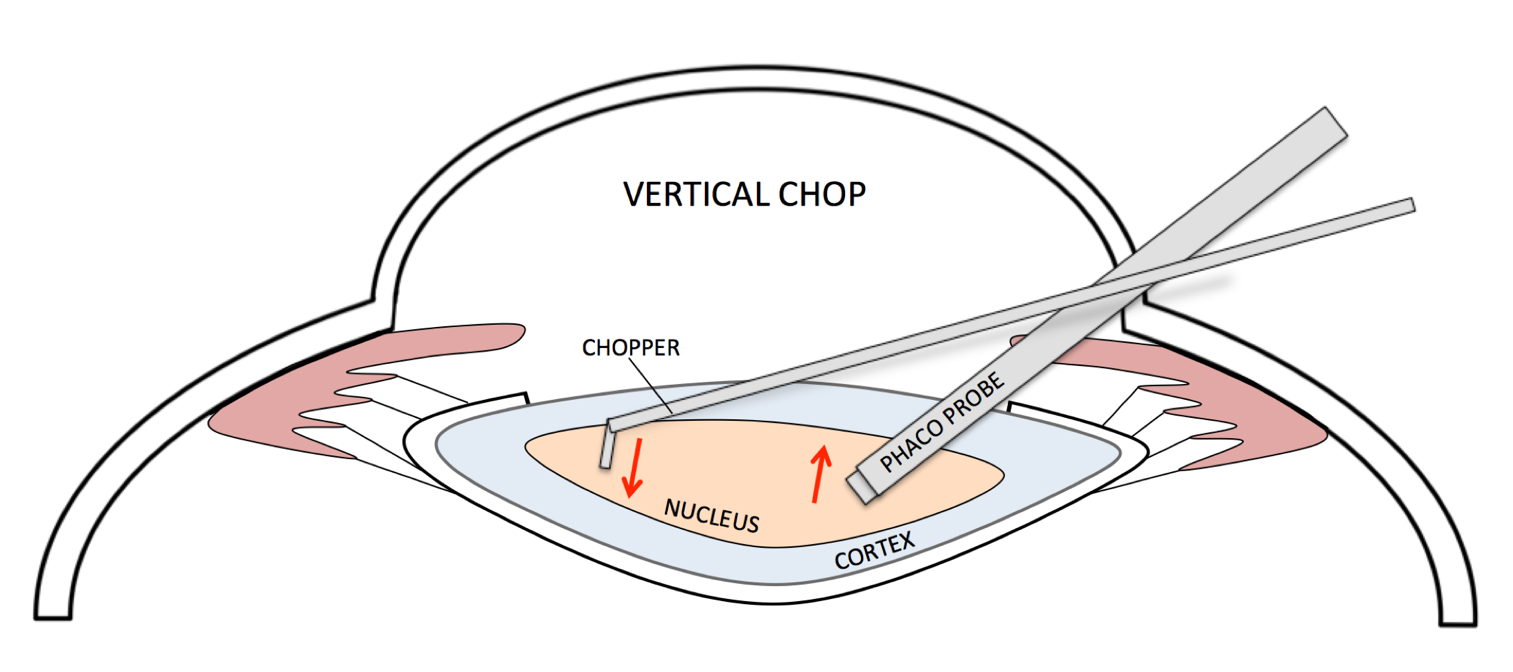Horizontal Chop and Vertical Chop
Title: Horizontal Chop and Vertical Chop
Author (s): Troy Teeples, MSIV, Nikko Ronquillo, MD, Jeff Pettey, MD
Photographer: Troy Teeples, MSIV University of Utah School of Medicine
Date: 11/6/2018
Keywords/Main Subjects: Phaco chop, horizontal chop, vertical chop, cataract surgery
Brief Description: Horizontal and vertical chop are two techniques that use manual instrument forces to segment the nucleus in mere seconds during cataract surgery. Here we describe these two techniques.
Introduction:
Horizontal and vertical chop are two phaco chop techniques which utilize the phacoemulsification handpiece and a second instrument to fragment the nucleus into multiple segments. As compared to the standard divide-and-conquer technique, these approaches require less ultrasonic energy.
The basic concept of chopping is holding the nucleus in place with the phaco probe while a chopping instrument splits it into pieces. Much like cutting a piece of meat with a fork and knife, it is paramount that the phaco probe hold the cataract in place with a high enough vacuum level to allow the chopper to fragment the nucleus. Properly performed, nucleus segmentation by horizontal and vertical chop are extremely efficient approaches during cataract surgery.
While either technique may be used for most types of cataracts, horizontal chop is best suited used for softer density lenses of the 1-2+ NS grading while vertical chop is easier to perform in more dense lenses of the 2-3+ variety.
Technique Description:
In horizontal chop, a chopper is passed under the capsulorhexis and hooked under the lens equator. The phaco tip is buried into the nucleus to hold the nucleus in place and the chopper is then moved horizontally, or towards the phaco tip. A horizontal crack through the nucleus is accomplished when the chopping instrument and phaco tip are moved in opposite directions, as seen in the video. The nucleus is then rotated, and the horizontal chop can be repeated to the heminuclei to divide the lens nucleus into four fragments. Phacomulsification of each individual fragment then ensues.
In vertical chop, the phaco tip is embeded into the nucleus using a high vacuum setting in order to keep the nucleus fixed in place, similar to horizontal chopping. However; in contrast to horizontal chopping, the chopper is impaled to the nucleus just anterior to the phaco probe and moved downwards (posteriorly) while the phaco probe moves in the opposite direction upwards (anteriorly). This creates a horizontal crack through the nucleus. This crack is accomplished by moving the chopping instrument and phaco tip in opposite directions laterally. The nucleus is rotated and the two heminuclei can then be vertically chopped. Phacoemulsification of each individual fragment then ensues.
Faculty Approval by: Jeff Pettey, MD
Identifier: Moran_CORE_25803
Copyright Teeples, ©2018. For further information regarding the rights to this collection, please visit: Terms of Use







